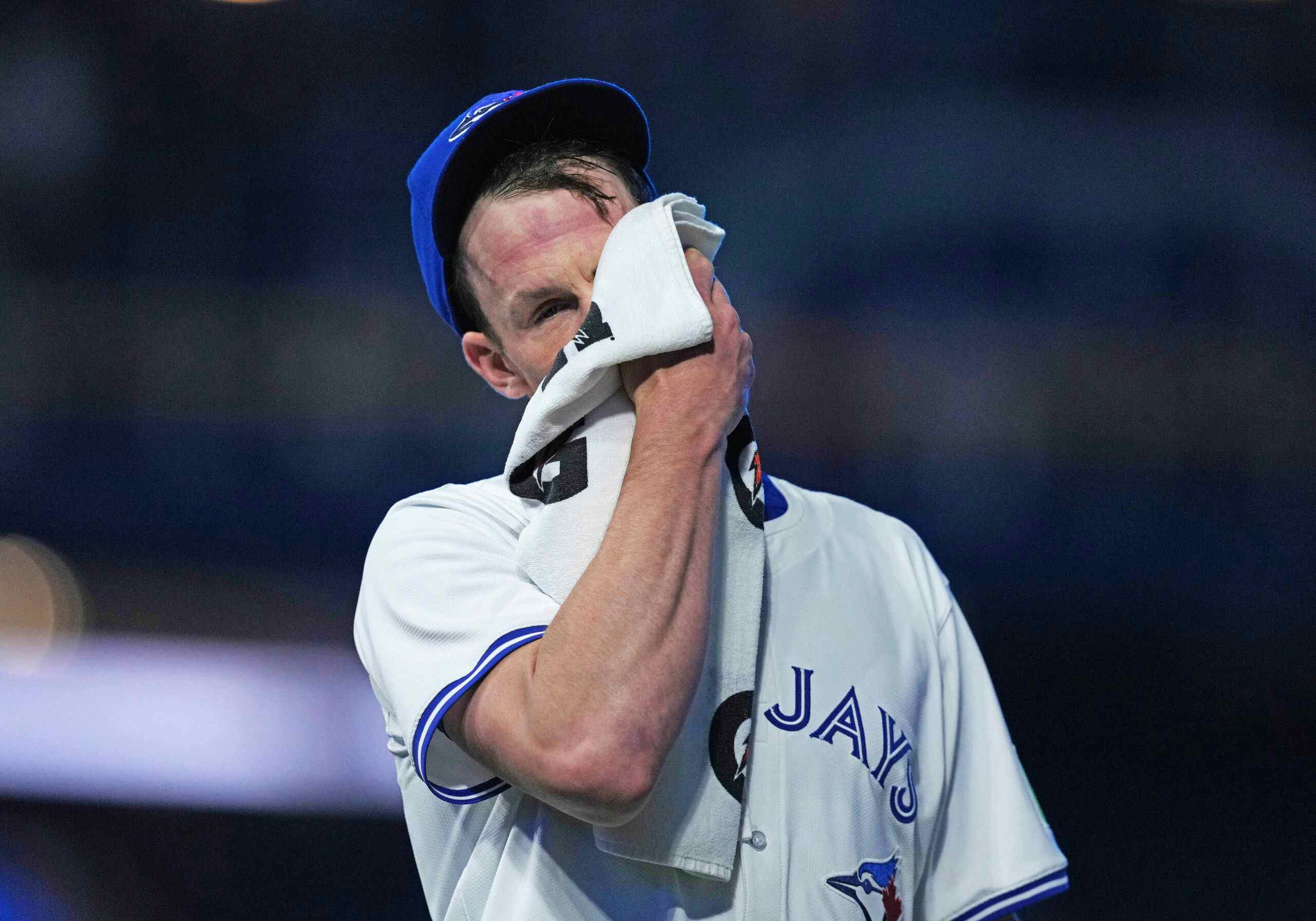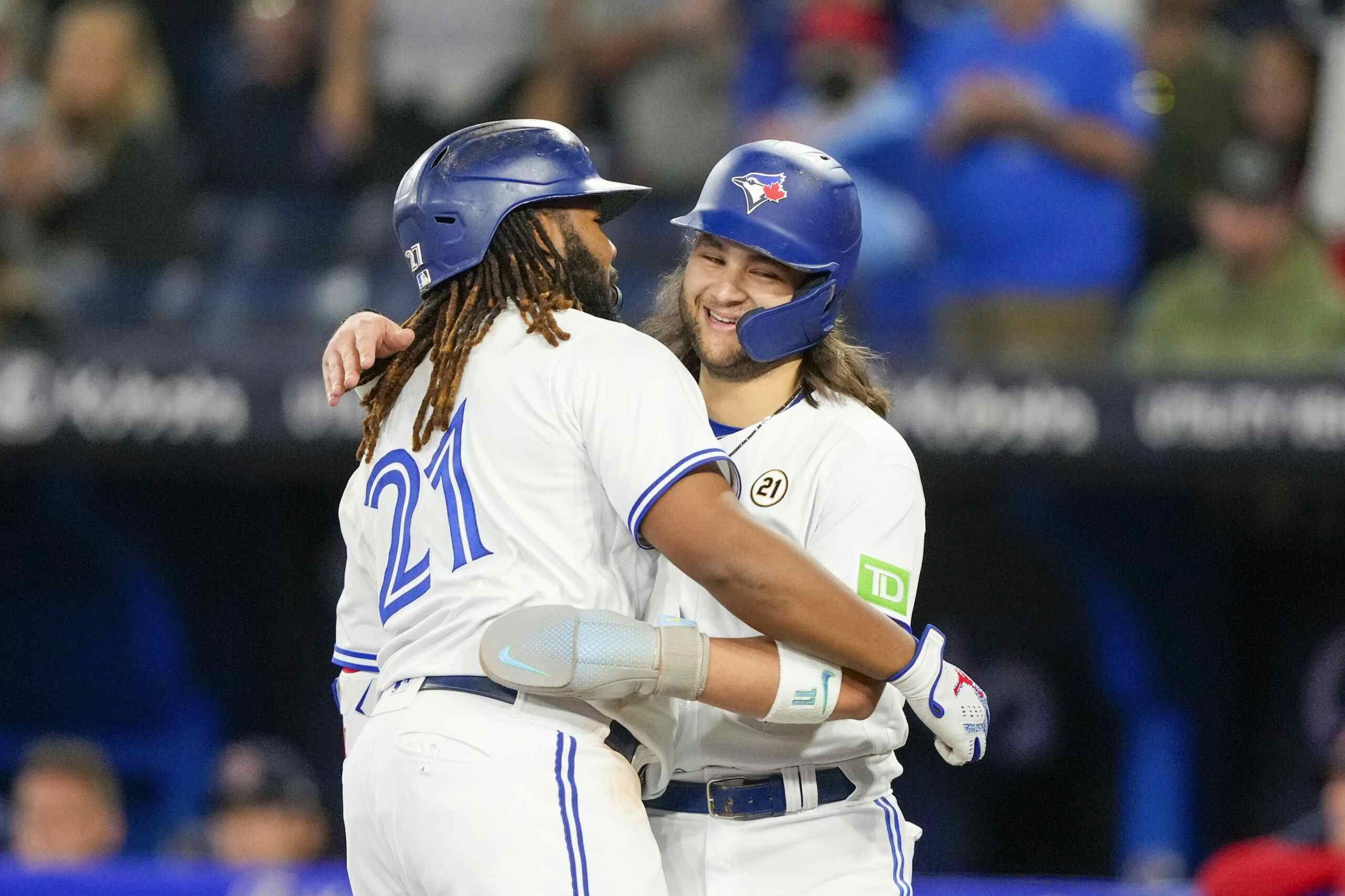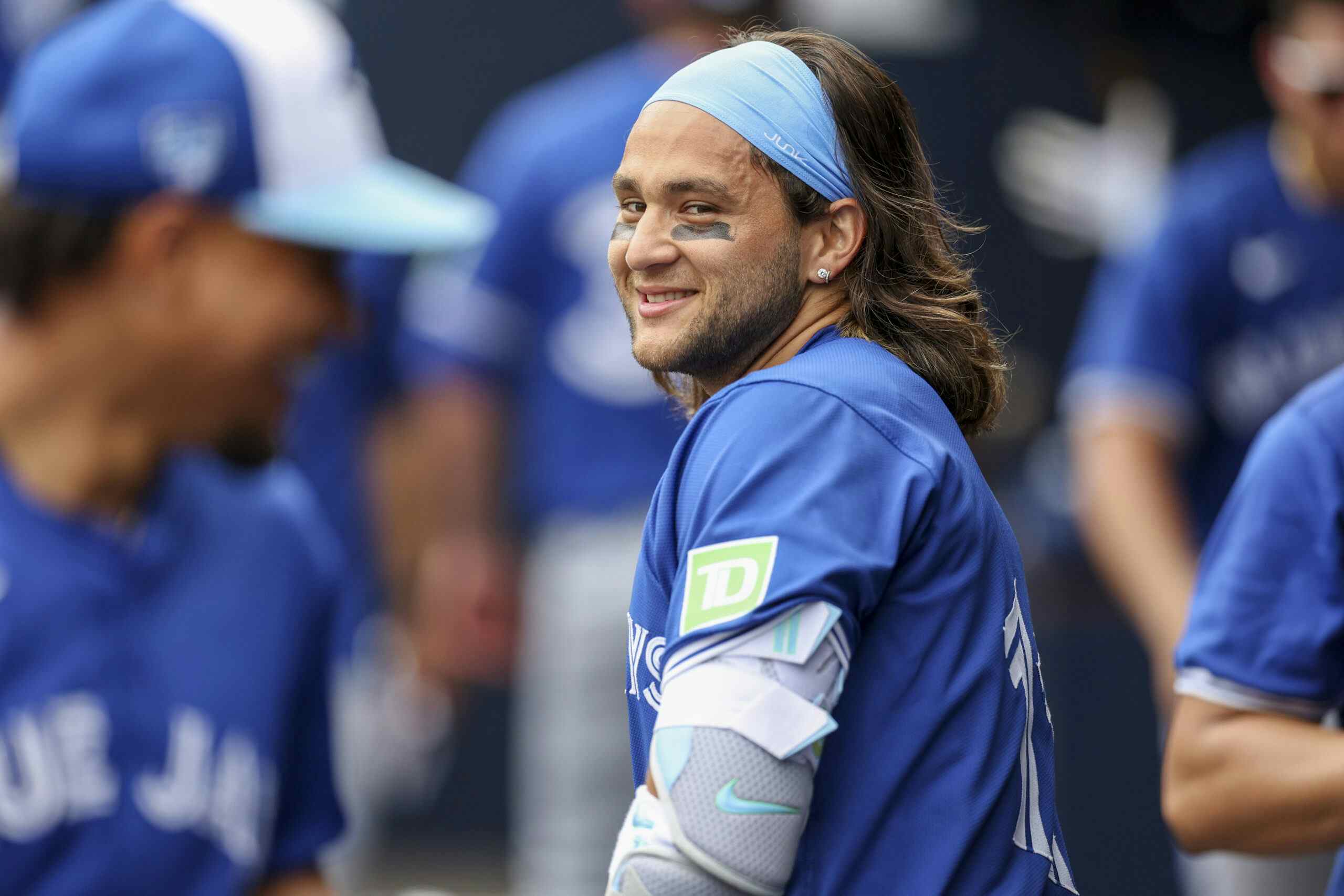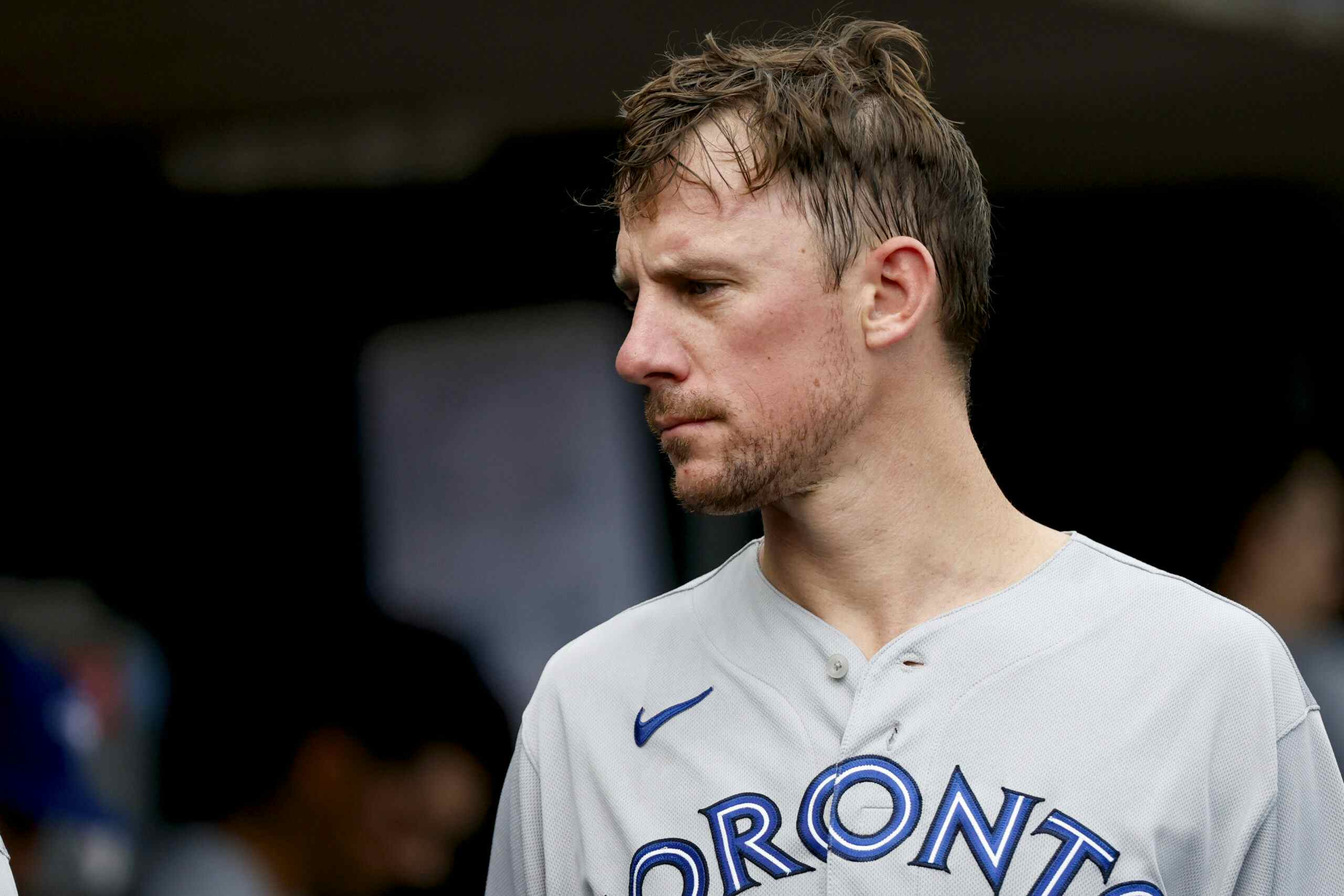The Shapkins Defender – Stuck in the Middle with Blue (Jays)
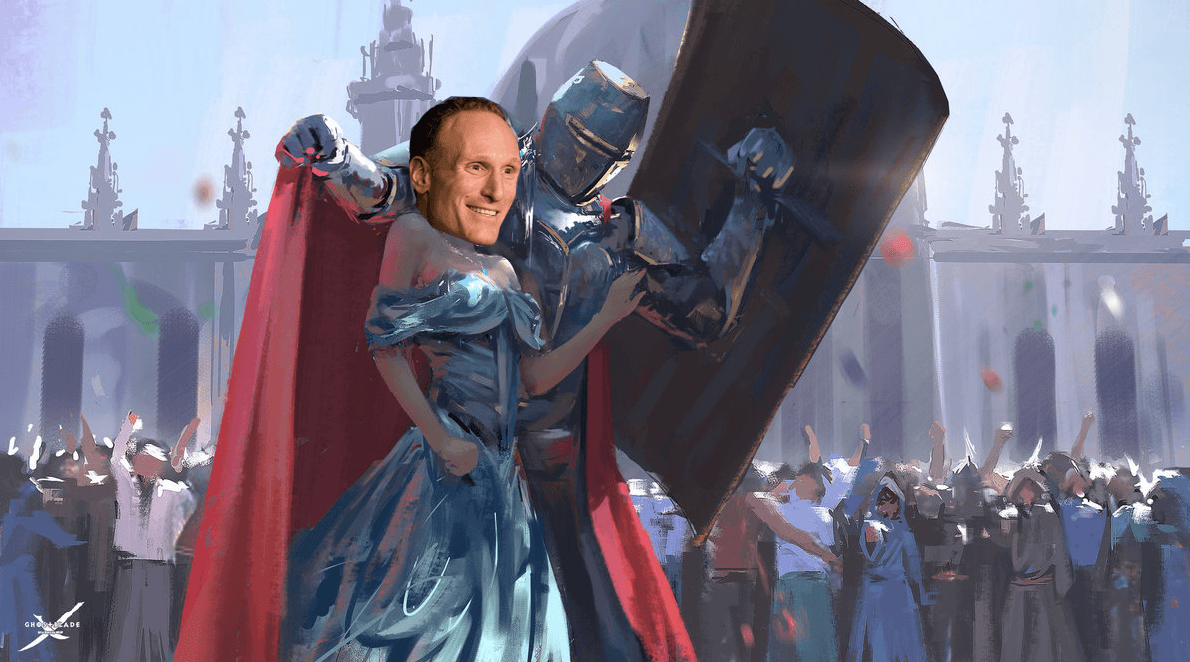
By Darragh
4 years agoWelcome to The Shapkins Defender, where I inhale your toxic screeds and spit out the fresh oxygen of optimism, like a tree that kind of understands WAR. (Just don’t ask me to explain it.) Let’s get to it!
For this edition, I am going to talk about Stealers Wheel. I mean, Wheeler’s deal. I saw lots of people voicing their displeasure on the Twitter, both with the fact that the Jays let him go and the cyborgian comments from Atkins after the fact. And while I completely understand the reaction, I’m not quite there myself. Let me try to explain.
First, I want to get into some nuance for a moment because the modern baseball landscape puts us fans in a bind, since the player compensation system is so broken. If this is something that concerns you as a person who has empathy for your fellow human beings, then you are likely to have two competing desires that perpetually exist side-by-side.
- Players aren’t being paid enough, given that league revenues are up but player salaries are down. And since the baseball players are what I am paying to watch, I want more of my money going to them as opposed to the fat cat owners.
- As a fan, I want my team to use its financial resources wisely in order to assemble the best team possible.
If you’re not familiar with the first part, you could start with this overview. Even though the number of human beings who physically attend baseball games is going down, the league revenues are still up because of people watching on TV or online. However, player salaries are trending downward, even at the top. This year’s qualifying offer, which is the average of the 125 highest-paid players, went down compared to last year’s number.
And why are teams spending less at the top of the market? Probably because the compensation system is so lopsided, with players being severely underpaid in the early parts of their career. To illustrate this, here’s a nugget from Kiley McDaniel’s recent chat over at FanGraphs that I thought was quite illuminating. A person asked a question about Wander Franco, who is evaluated as having a Future Value of 70 on the 20-80 scouting scale, which FanGraphs says is worth about 112 million bucks.
“So, Wander Franco would cost (broadly approximating the figures) $40M for his controlled years and return $152M, in NPV terms. NPV means adjusted for time value of money, so 40 and 152 are lower than the actual numbers, but we’re giving you what those numbers in the future would be worth today.”
Now, I ain’t a fancy big-city accountant. (Pretend I was pulling on my suspenders and speaking in a folksy accent while saying that.) I’m not smart enough to sift through the details of what exactly is meant by “Net present value” or “time value of money” or… that thing that looks like the letter S with a vertical line through it. But in some sense, it means that they expect Wander Franco to be worth around 152 million bucks during the first six years* of control but that the Rays will only have to pay him about 40 million or so.
(* ”six years” means “seven years” in baseball, the sports that loves math.)
If 40 million seems low to you, keep in mind that Mookie Betts has made under 33 million so far in his career. He’s projected to make about 27 more this year, his last year of control, putting him around 60 total. And that’s with being one of the best players in baseball for essentially his whole career and refusing any long-term security by going through the arbitration system year-by-year.
So, if you’re a front office person, why give 118 million bucks to Zack Wheeler when you can possibly get Nate Pearson to do essentially the same job at a much lower salary?
Anyway, if you’re still reading all this jargon, you probably get my meaning by now. Front offices are not looking to spend a buck to get a dollar of value. They want surplus value. The problem is that this is a perfectly logical strategy for them to take. Let’s move on to the second part of the contradiction I laid out at the beginning of this piece.
After the wild card games, Jason Martinez did a series over at FanGraphs called How They Were Acquired, where he analyzed how the eight remaining teams has been assembled. And I went to the trouble of breaking it down for you with my superb Excel skills. (I won’t provide all eight links here. But I hope the pieces are easy enough to find if you’re curious.)

As you can see, most of these rosters have been assembled with a combination of homegrown talent and players acquired by trades. The Cardinals, Twins and Dodgers got well over half of their WAR from homegrown players. The Rays are the lowest with only 23% of their WAR coming from homegrown players. But that’s because they got a whopping 59% of their WAR from trades, mostly by trading established big leaguers for the “homegrown” players of other organizations.
The Dodgers and the Nationals are the only teams to have gotten more than 30% of their WAR from free agency. And most of those guys weren’t signed on massive, nine-figure deals like Wheeler. (The big-budget Yankees were just under 27% but might have been able to get over 30 if they weren’t paying Jacoby Ellsbury 21 million bucks to sit on the IL. This is one of the perils of handing out lucrative contracts. If the Yankees had allocated these resources elsewhere, could they have made it to the World Series? And could they have won it?)
For the Dodgers, of their 16.8 WAR from free agency, almost a third of it was the 4.8 from Max Muncy, who originally came to the team on a minor league deal and was still making the league minimum. (2020 will be his first arbitration year.) Another 4.8 WAR came from Hyun-Jin Ryu, who was on a 1-year deal of just under 18 million after accepting the qualifying offer a year ago. Another 3.4 came from Justin Turner, the highest-paid player of this bunch. Though he originally came to the Dodgers on a minor league deal just like Muncy, he did re-sign after reaching free agency in 2016. However, his deal was for four years and 64 million, a guarantee just over half of the 118 million that Wheeler got.
For the Nats, they certainly benefitted from spending large in free agency. Of the 17.8 WAR that came from free agents, some of it came from small deals to guys like Kendrick and Suzuki. But they got a whopping 6.5 WAR from Max Scherzer and 4.8 from Patrick Corbin, guys who signed contracts for 210 million and 140 million, respectively.
So, big free agents can certainly help a team. The Nationals did just win the World Series, after all, thanks in large part to these two guys. But these bold moves were not made when the Nationals were coming off a 67-win season like the Blue Jays are now. Scherzer was signed after the 2014 season, when the Nationals had just completed their third straight winning season, including two division wins. Corbin was signed four years later, when the team had increased their streak to seven consecutive winning seasons, including four division wins. So, even the team that relied the most on the free-agent market did so after being one of the worst teams in baseball for many years and then building around kids like Bryce Harper and company.
So, look. I get that fans want to dream about free agents. There’s a part of your brain that screams “He’s just sitting there! Go grab him!” I understand both the desire and the disappointment when it doesn’t deliver. I want the Blue Jays to be good just as much as anyone. I spend most of each day thinking about our slowly-burning planet and the filthy-rich ghouls responsible for it and the fuckers who could do something about it but won’t as to not annoy the filthy-rich ghouls and the increasing hostility that institutions are willing to dole out to those they deem to be unworthy of being within the castle walls of civilization and, holy shit, it would be so much easier to navigate being a part of this nightmare world and my daily grind of riding a bus, then a subway, then another bus to get to my dead-end job in a windowless room and then back home again if I knew that, each night, there was a good chance of my favourite baseball team bashing the living snot out of their opponents. Believe me, I want it just as bad as you.
But the unfortunate reality is that baseball teams, even the successful ones, they usually only have a couple of roster spots dedicated to big splurges on the free agent market. (Even a team with a payroll of 250 million, way over the luxury tax, that’s only 10 million per roster spot.) And the time to make those bold moves is usually when a quality foundation has already been laid by hoarding young, controllable talent during the lean years. I’m glad that Ellsbury got his mountain of money, just as I’m happy that Wheeler got his. The players should get the money that the industry generates because they are the ones generating it. But I’m also fine with them not being on the team I root for. The Phillies are spending big now because they’re trying to come out of a long rebuild and have been hovering around mediocrity, struggling to get over .500 over the past two seasons. The Blue Jays have a promising young roster but are not quite at that level. If they could turn 67 wins into 97 wins with a couple of free agent buys, they would do it. But the league isn’t set up to work that way.
This is why I tried to outline such a nuanced position at the beginning. It sucks that baseball is broken in this way. I wish that it wasn’t. I’m not rooting for Rogers to pocket a bunch of money and pretend to be strapped for cash like some of the other owners in the league. And I hope that this can be ameliorated in some way with the next CBA. But until then, if this is the game that front offices have to play, then I want the guys in charge of my favourite team to play it. And based on the way they’ve put a priority on player development, I think they are filling out that chart as best they can, trying to maximize the performance of their homegrown players as well as the prospects acquired by trade. As for the cherries on top, the big free agent signings to really put the team into an elite level, I can be a little bit more patient because I think they will come when the timing is right. If they don’t, I’ll be just as pissed at the clowns and jokers as you are.
If you’ve already run out of patience with this front office, send your hot takes, diatribes, harangues, tirades and jeremiads to me at darraghm@gmail.com or @darraghfilm on Twitter, or just leave a comment below.
Recent articles from Darragh

